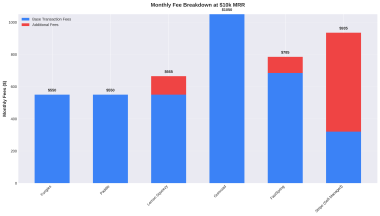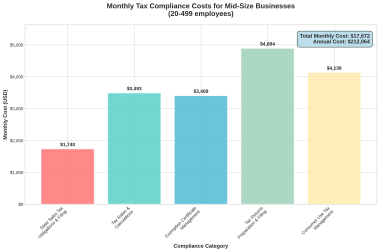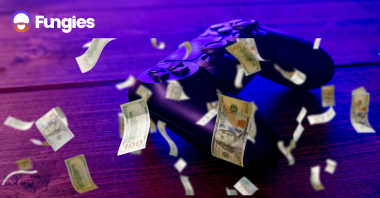Every Year, about 50,000 to 100,000 new mobile apps are released globally. With the market exploding with new titles every day, it’s tougher than ever to stand out. Just having a fantastic game isn’t enough anymore. To truly dominate the competition, you need a cutting-edge mobile game marketing strategy.
This article dives into the 7 Best Tactics to Succeed in 2024. It will outline the most effective strategies to get your game downloaded by millions.
By the end, you’ll have a clear roadmap to turn your mobile game into a viral phenomenon.
What Is Mobile Game Marketing?
Imagine this: you’ve built an epic mobile game. But how do you get millions of gamers to discover your masterpiece? That’s where mobile game marketing comes in.
Mobile game app marketing strategy is all about promoting your game to the right audience. It’s like having a super cool megaphone to shout about your game to the entire world.
There are three main goals that every mobile game marketing strategy should aim for:
- Download Domination: This is all about getting as many people as possible to hit that “install” button. The more downloads you have, the more players you have, and the more people get to experience your awesome game!
- Engagement Extravaganza: Downloads are great, but you want players to keep coming back for more, right? Engagement is all about keeping players hooked and playing your game. This might involve fun in-game events, new content updates, or even fostering a positive online community.
- Revenue Rumble: Let’s be honest, creating a great game takes time and resources. The mobile game marketing plan helps you achieve financial success through in-app purchases. But remember, the focus should always be on creating a fun and engaging experience, not only making money.
Define Your Target Audience: Hitting the Bullseye with Your Marketing
Imagine throwing a giant dart at a board blindfolded. Yeah, that’s not exactly how you want to approach your mobile game marketing strategy. The secret weapon? Defining your target audience.
Think of your target audience as the bullseye on the dartboard. It’s the specific group of gamers who are most likely to love your game. This is the foundation of any successful game app marketing strategy.
Here’s why it’s so important:
- Laser-Focused Marketing: This means you’re not wasting time and resources trying to reach everyone. You’re speaking to the gamers who will appreciate your game.
- Persona Power: To get specific, you can create user personas. These profiles that represent your ideal players. These personas include things like age, gender, gaming habits, and even their favorite types of mobile games. With user personas in tow, you can visualize exactly who you’re marketing to, making your campaign even more effective.
So, before you start blasting out ads everywhere, take some time to define your target audience. It’s like putting on a pair of targeting goggles – you’ll see your ideal player’s crystal clear, ready to be wowed by your amazing mobile game!
Pre-Launch Marketing Strategies: Generating Buzz Before Launch Day
Alright, you’ve defined your target audience and your game is ready. Now it’s time to reveal the hype machine! Here are some killer pre-launch marketing strategies to get your game popular.
Building Hype with Teasers and Trailers
Imagine a movie trailer that leaves you counting down the days until the premiere. That’s the kind of excitement you want to create with your game’s teasers and trailers. Here are some tips for making them truly epic:
- Keep it Short and Sweet: Attention spans are short these days, so aim for teasers around 30 seconds and trailers under 2 minutes.
- Highlight the Highlights: Showcase the coolest features of your game. The stunning graphics, the addictive gameplay, the hilarious characters.
- Leave Them Wanting More: Don’t reveal everything! End your teasers and trailers with a cliffhanger or a question to keep gamers intrigued.
- Pro Polish is Key: Invest in high-quality visuals and sound design. A polished trailer screams professionalism and gets gamers excited about the final product.
Leveraging Social Media: Where the Buzz Begins
Social media is your playground in the pre-launch phase. Here’s how to use them like a pro:
- Sneak Peeks & Behind-the-Scenes: Share short glimpses of your game in development. You can show concept art, character designs, and even funny bloopers.
- Countdowns & Contests: Drum up excitement with a countdown to launch. You can even host contests or giveaways to incentivize participation and get players talking about your game.
- Targeted Ads: Use social media advertising platforms to reach your target audience. This lets you tailor your message to specific demographics and interests, ensuring your game reaches the right eyes.
- Influencer Outreach: Partner with gaming influencers who align with your target audience. These influencers can showcase your game to their followers, generating valuable word-of-mouth buzz.
Launch Marketing Strategies: Making a Splash on Launch Day
Launch day has arrived! Your game is out in the wild, and you’re thinking about how to promote your mobile game. To make a lasting impression, you need a launch marketing strategy that gets your game noticed. Here are some key tactics to use:
App Store Optimization (ASO): Mastering the Art of Discovery
The app store is a battlefield, and ASO is your secret weapon. ASO refers to optimizing your app store listing to rank higher in search results. The higher you rank, the more gamers discover your game. Here’s how to dominate ASO:
- Captivating Title & Description: Craft a short catchy title. Use relevant keywords that players might search for. The description should be clear, and concise. Highlight the key features and benefits of your game.
- Keyword Magic: Research popular keywords that your target audience uses to find similar games. Incorporate these keywords throughout your listing, but avoid keyword stuffing!
- Visual Appeal is Key: Eye-catching screenshots and a stunning app icon are crucial for grabbing attention in a crowded app store. Invest in high-quality visuals that showcase the beauty and excitement of your game.
Press Releases and Media Outreach: Getting the Word Out
Imagine your game being featured on popular gaming websites or YouTube channels. Press releases and media outreach can make that dream a reality. Here’s how to get started:
- Craft a Newsworthy Press Release: Write a compelling press release announcing your game’s launch. Highlight the unique features, the target audience, and any interesting aspects.
- Target the Right Publications: Don’t blast your press release everywhere. Research gaming websites, blogs, and YouTube channels that cater to your target audience.
- Build Relationships with Media: Don’t just send a press release and expect magic. Develop relationships with journalists and influencers over time. Genuine connections will lead to more impactful coverage.
Influencer Partnerships: Teaming Up with Gaming Heroes
Gaming influencers are like rock stars in the mobile gaming world. Partnering with the right influencers can expose your game to a massive and engaged audience. Here’s how to find your influencer dream team:
- Identify Relevant Influencers: Look for influencers who play and promote games like yours. Their audience is likely to be highly receptive to your game as well.
- Quality Over Quantity: Don’t just go for the influencer with the biggest follower count. Focus on those who genuinely connect with their audience and align with your game’s brand.
- Craft a Mutually Beneficial Collaboration: Don’t just ask for a shoutout. Develop a creative partnership that allows influencers to showcase your game authentically.
You can tap into their established audience and generate excitement for your game launch.
Post-Launch Marketing Strategies: Keeping the Momentum Going
Launch day is just the beginning! The key to long-term success is maintaining a steady stream of new players and keeping your existing players engaged. Here are some powerful post-launch marketing strategies on how to promote your mobile game:
Paid User Acquisition: Targeted Ads for Targeted Players
Imagine reaching millions of potential players who are exactly like your target audience. Paid user acquisition makes this dream a reality. This involves using paid advertising platforms like Facebook Ads, and Google Ads.
Here’s how to leverage paid user acquisition:
- Targeting Power: These platforms allow you to target your ads to users based on demographics, interests, and even gaming habits. This ensures your message reaches the players most likely to enjoy your game.
- Creative Campaigns: Don’t settle for boring ads. You must craft eye-catching visuals and compelling messages that grab attention.
- Consider Fungies: For those who are new, there are services available to help you navigate the complexities. Companies like Fungies specialize in User Acquisition. You can use them to craft and launch targeted campaigns across platforms like Google, Facebook, and even the exploding TikTok.
Organic User Acquisition: Growing a Community of Fans
Building a passionate community around your game is a surefire way to drive organic user acquisition. Here’s how to cultivate a thriving community:
- Social Media Engagement: Be active on social media platforms like Twitter, Discord, and Reddit. Respond to comments, answer questions, and host fun contests to keep players engaged.
- The Power of Community: Encourage user-generated content. You can do this by hosting art contests, cosplay challenges, or in-game screenshot competitions. This not only entertains your current players but also exposes your game to a wider audience.
- Word-of-Mouth Magic: Positive word-of-mouth is one of the most powerful marketing tools. You’ll get players talking about your game to their friends, naturally attracting new players.
Content Marketing: Creating Content that Keeps Players Hooked
High-quality content creation is another post-launch superstar. Here are some ideas to get you started:
- Engaging Blog Posts: Craft informative blog posts about your game’s lore and character strategies. This keeps players engaged and informed.
- Tutorial Triumphs: Develop helpful tutorials that guide new players through the game.. This not only reduces churn (players quitting) but also showcases the depth and complexity of your game.
- Let’s Play Power: Partner with gaming YouTubers or streamers to create “Let’s Play” videos. Watching others play your game can be incredibly enticing for new players. Endorsements from popular creators can significantly boost your game’s visibility.
Retention and Engagement Strategies: Keeping Players Hooked for the Long Haul
So, your game is live, you’ve got a growing community, and the downloads are rolling in. But the real challenge is keeping those players engaged and coming back for more. Here are some essential retention and engagement strategies to turn your players into lifelong fans:
In-Game Events and Updates: Freshness is Key!
Imagine your favorite game never changing – pretty boring, right? Regular updates and events are the lifeblood of player engagement. Here’s why they’re crucial:
- Fresh Content Keeps Players Hooked: New content like levels and characters keeps players excited.
- Seasonal Delights: Special events tied to holidays or real-world events add a fun and festive layer to your game.
- A Constant Stream of Surprises: Limited-time events or rewards create a sense of urgency and encourage players to stay active.
Loyalty Programs and Rewards: Showering Players with Love (and Stuff)
Nobody likes feeling unappreciated, and your players are no different. A well-designed loyalty program rewards players for their time and investment in your game. Here’s how it fuels engagement:
- A Thank You for Playing: You can offer Rewards like in-game currency, exclusive items, or early access to new features. It shows players you appreciate their dedication.
- Motivating Milestones: Set achievable goals and milestones that players can work towards. Earning rewards for reaching these milestones keeps them engaged and striving for more.
- A VIP Experience: Use loyalty programs that offer increasing benefits for highly engaged players. This incentivizes players to stay active and climb the loyalty ladder.
Push Notifications and Email Marketing: Gentle Reminders
Sometimes, even the most dedicated players need a little nudge to come back and play. Push notifications and email marketing can be powerful tools for re-engagement, but use them wisely:
- Targeted Communication: Don’t spam your players! Tailor your messages to specific player segments based on their activity levels and in-game interests.
- Offer Value, Not Spam: Push notifications and emails should offer valuable incentives. You can remind players about limited-time events or exclusive rewards.
- The Power of Personalization: Personalize your messages whenever possible. A simple “Hey [Player Name], we miss you!” can go a long way in re-engaging dormant players.
Analyzing and Optimizing Marketing Efforts: Keeping Your Strategy on Top
Congrats! You’ve launched your mobile game, implemented a killer marketing strategy, and your player base is growing. But just like a race car, your marketing efforts need constant fine-tuning to stay ahead of the competition. Here’s how to analyze and optimize your mobile game marketing campaign for greatest impact:
Key Performance Indicators (KPIs): Tracking What Matters
Imagine driving a car blindfolded – not exactly a recipe for success. The same goes for your marketing strategy. Key Performance Indicators (KPIs) are like your headlights. It illuminates what’s working and what needs improvement. Here’s why they’re crucial:
- Setting Goals & Measuring Success: Before diving in, define clear goals for your marketing campaign. Do you want more downloads, increased engagement, or higher in-app purchases? Your KPIs will track your progress towards those goals.
- A Data-Driven Approach: Track key metrics like download rates, player retention, and in-app revenue. This data allows you to see what marketing tactics are most effective and where you might need to adjust your strategy.
- Making Informed Decisions: By analyzing your KPIs, you can make data-driven decisions. It can be about your marketing budget, campaign optimization, and future marketing initiatives.
KPIs are the compass that guides your mobile game marketing plan. By setting the right ones and tracking them closely, you can ensure your strategy is always on the right course.
A/B Testing and Iteration: The Power of Tweaking
Imagine having two versions of a game trailer – which one will resonate more with players? A/B testing is a powerful tool that helps you answer questions like this. Here’s how it works:
- Testing Variations: Create different versions of your marketing elements. It can be ad copy or app store screenshots, or even in-game features.
- Splitting the Audience: Show these variations to different segments of your target audience to track the results.
- Data Reveals the Winner: Analyze which version performs better based on your chosen KPIs.
With A/B testing and iterating on your marketing efforts, you can slowly but surely optimize your campaigns for the greatest impact. Remember, small tweaks can lead to big improvements in your mobile game’s success.
Common Mobile Game Marketing Mistakes (and How to Skip Them)
Launching a mobile game is awesome, but getting people to actually play it can be tricky. Here are some mistakes new game devs make when marketing their games. We will also cover along with super easy ways to avoid them:
Mistake #1: Blasting Your Game Out Everywhere
Imagine showing a racing car commercial to someone who loves building with Legos. Not a great fit, right? This is what happens when you advertise your game to everyone instead of focusing on the right gamers.
How to Fix It: Find out who your ideal player is. Are they puzzle masters, strategy whizzes, or action junkies? Then target your ads to people who like those kinds of games.
Mistake #2: Boring App Store Description
The app store description is like your game’s first impression. If it’s dull and confusing, people will scroll right past.
How to Fix It: Write a short, exciting description that tells people exactly what your game is about. Use clear language and highlight the coolest features. Don’t forget to add eye-catching screenshots too!
Mistake #3: Ignoring Free Marketing
You don’t always need a ton of cash to promote your game. There are tons of free ways to get people excited. i.e posting on social media or reaching out to gaming YouTubers.
How to Fix It: Get active on social media platforms like Twitter, TikTok, or YouTube. Share cool clips of your game, answer questions from fans, and run fun contests to spread the word. You can also try contacting gaming influencers for advertisement.
Mistake #4: Letting Your Game Get Stale
Once people download your game, you want to keep them hooked! If there’s nothing new to do, they’ll get bored and move on to something else.
How to Fix It: Keep your game fresh with regular updates that add new levels, characters, or special events. This gives players a reason to keep coming back for more.
Mistake #5: Forgetting About Your Players
If players have questions or problems with your game, you want to help them out fast!
How to Fix It: Set up a way for players to contact you. This could be through email, social media, or even a live chat feature in your game. Respond to their messages fast and show them you care about their experience.
Leaving words
This article unpacked 7 powerful mobile game marketing tactics to dominate the app store battlefield in 2024. But strategies alone won’t win the war. You need the right tools to execute them flawlessly.
That’s where Fungies comes in.
Fungies.io is an all-in-one platform designed to empower indie developers and small studios like yours. Build your own storefront in minutes, reach your target audience with laser-focused ads, and keep players engaged with in-game events – all without any coding required!
Stop by Fungies.io today and unleash the full potential of your mobile game!
FREQUENTLY ASKED QUESTIONS
What are the most effective marketing channels for promoting a mobile game?
To get more people to find your game, you gotta use smart tricks. First up, pick the right words for your game’s page so folks can find it easily in the app store. Then, make your social media game strong by talking to people where they’re hanging out, like Twitter and TikTok.
How can I measure the success of my mobile game marketing strategy?
Data is king! Track key metrics and in-app revenue. Analyze this data to see what’s working and what needs tweaking.
What are some common mistakes to avoid in mobile game marketing?
When you’re talking to gamers about your game, don’t just send out a boring message that could apply to anyone. Make it special for the gamers you want to play! Oh, and don’t forget about ASO.






